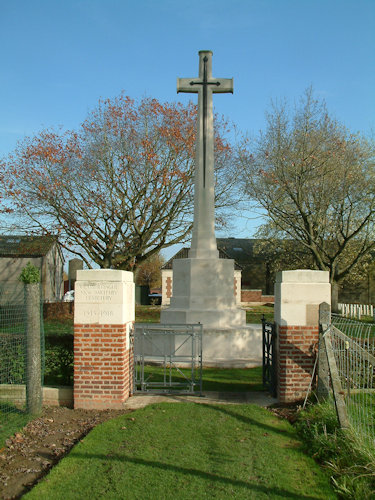Name
William John Stoten
Conflict
First World War
Date of Death / Age
03/08/1917
27
Rank, Service Number & Service Details
Gunner
83305
Royal Garrison Artillery
95th Siege Battery
Awards: Service Medals/Honour Awards
Not Yet Researched
Cemetery/Memorial: Name/Reference/Country
VLAMERTINGHE NEW MILITARY CEMETERY
V. B. 38.
Belgium
Headstone Inscription
Not Researched
UK & Other Memorials
St Mary the Virgin Church, Therfield,
Non-conformist Chapel, Therfield,
We are not aware of any memorial in Reed End
Pre War
Born in 1891 in Therfield, Herts. son of James and Sarah Stoten, of Reed End, Royston, Herts. He was a horse keeper.
Recorded as born in Therfield and living in Royston (probably the postal for Therfield) when he enlisted in Hitchin.
1901 census details
William (senior) was a widower aged 35 working as a horse keeper on the farm. He was living at Dane End. He had William, 9 and Arthur, 6 to look after.
1911 census details
By this census, William had remarried in about 1906, a widow Sarah (of Buckland and mother of Thomas Henry Drage also in this book)
They were living at Reed End, Therfield in 2 cottages with 8 rooms. Young William was 20, Arthur was 17 and Thomas Drage was also 20. The 3 boys were recorded as ploughmen. Young William was employed by Mr. C.R. Turney of Mardley Bury (Reed End).
Prior to enlisting William was employed by Mr C R Turney at Mardley Bury.
Wartime Service
He enlisted on 20 May 1916. Entered France 31 Aug 1916.
William joined up in Hitchin on May 20th 1916 where his partial surviving service records show that he was 24 years, 10 months with a height of 5 feet 6 and 3/4 inches and a chest measurement of 37 ½ inches.
He was trained very briefly with the Royal Garrison Artillery. Joined his unit on April 4th 1917 and on August 6th was posted to France. By August 31st he was a gunner attached to 95th Siege Battery.
He is buried in Vlamertinghe New Military Cemetery, 5 km. West of Ypres, Belgium in plot 5, row B, grave 38.
The role of the Siege Battery
Siege Batteries RGA were equipped with heavy howitzers, sending large calibre high explosive shells in high trajectory, plunging fire. The usual armaments were 6 inch, 8 inch and 9.2 inch howitzers, although some had huge railway- or road-mounted 12 inch howitzers. As British artillery tactics developed, the Siege Batteries were most often employed in destroying or neutralising the enemy artillery, as well as putting destructive fire down on strongpoints, dumps, store, roads and railways behind enemy lines. The armaments of each battery will be given as details are added.
William’s 95th Battery was attached to the 70th Heavy Artillery and their actual war diaries are difficult to determine because of cross movements but on the day of William’s sad death, August 3rd 1917, they were in Belgium and 1 officer was wounded and 9 ‘other ranks’ were killed between 11.30 am and 11.15 pm “mostly on work of carrying ammunition on the Saville Road” . William was one of them.
Additional Information
He left £13. 13s.11d to his father.
His parent suffered another loss in September 1918 when another son Thomas Henry a year later .
Acknowledgments
Malcolm Lennox, Jean Handley



